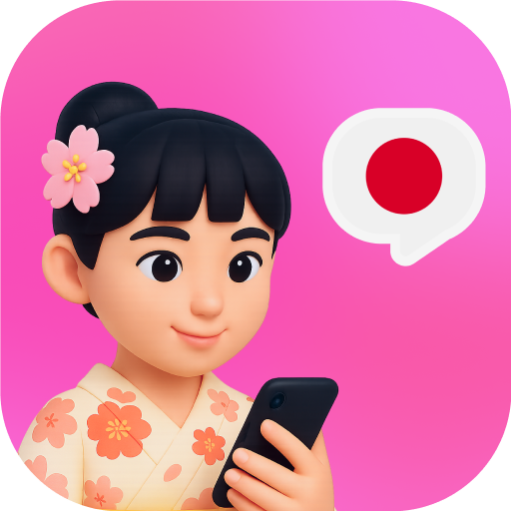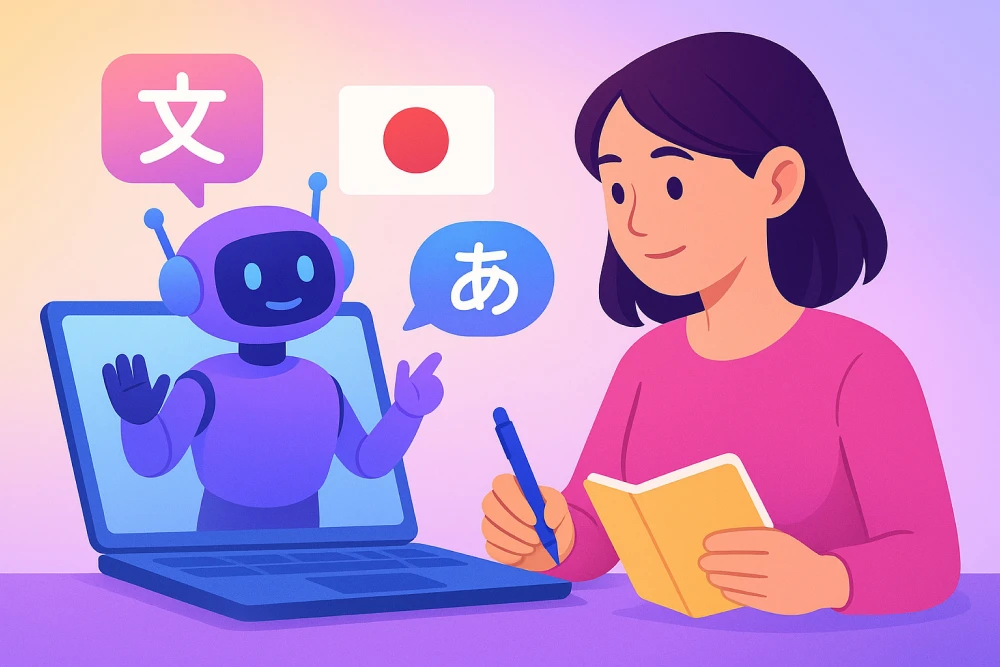Learning Japanese can open up a world of opportunities—whether you’re traveling, working abroad, or connecting with new friends. AI Japanese tutors are an exciting new development that help you master this complex and beautiful language. It’s a great practice option to prepare yourself for conversations with real Japanese speakers, but without the anxiety. Let’s explore how Japanese AI tutors can help you become a more confident speaker, the top tools available, and the best ways to make the most of your virtual language learning journey.
Introduction to AI Japanese Tutors
If you’ve tried learning Japanese before, you know that fluency isn’t just about memorizing vocabulary or grammar rules. The real challenge is piecing everything together in a conversation. Traditionally, this meant hunting for language partners, attending expensive classes, or traveling to Japan. Today, AI Japanese tutors are changing the game, making high-quality conversational practice available to anyone with an internet connection.
AI Japanese tutoring tools use advanced natural language processing to simulate real conversations. You can chat, ask questions, and even get corrections on pronunciation or grammar—all in real time. These tools are non-judgmental, always available, and tailored to your level, making them perfect for learners who want to practice speaking without the pressure.
As AI continues to evolve, these digital tutors are becoming even smarter and more useful. They can adapt to your learning style, track your progress, and provide personalized feedback. The result? A more engaging and effective way to practice speaking Japanese, right from your phone or computer.
The Role of AI in Japanese Learning
An AI Japanese tutor can be a game-changer, but only if used strategically. We recommend the following learning sequence:
- Master the basics: Start with vocabulary and grammar using flash cards or apps. Stay here until you know at least 30 words and phrases.
- AI tutor practice: Begin common scenarios like introductions, travel, or shopping. Focus on reinforcing known vocabulary while adding new terms gradually.
- Practice with native speakers: Your ultimate goal! Try local meetups, language exchanges, or travel to Japan to use your skills in the wild.
Benefits
AI Japanese tutors are designed to simulate real-world conversations and offer:
- Reduced anxiety. Speaking with real people can be intimidating. An AI tutor lets you make mistakes and learn in a safe space.
- Instant feedback. Get real-time corrections on pronunciation, grammar, and usage, with explanations to reinforce your understanding.
- 24/7 access. Practice anytime, anywhere—no need to schedule a class or find a speaking partner.
- Affordability. AI tutors are often free or low-cost compared to private teachers or in-person classes.
AI-based language tools are seeing explosive growth. Usage has surged over 300% in the last year, and they’re expected to represent over 40% of the language learning market in the near future.
Top AI Tools for Practicing Japanese Conversation
Here are some standout tools for AI Japanese conversation practice:
Japanese Ai: Created for real learners, Japanese Ai offers unlimited conversational practice with an intelligent, friendly AI tutor. You can try various scenarios, from ordering ramen to navigating Tokyo’s transit system. Instant feedback and a personalized interface make it ideal for building confidence with real-world Japanese.
Duolingo: Duolingo has introduced AI chat for certain languages, including Japanese. While fun and motivating, the chats are limited to structured topics and only available to Max users ($30/month). No free-form chats.
ChatGPT: Highly flexible—just prompt it to act as your Japanese tutor and start practicing. Be specific with your goals (“Let’s practice making small talk in Kyoto”). Great for advanced learners, but requires careful prompting.
Busuu: Offers traditional lessons mixed with AI-powered conversation. Busuu’s core strength is its structured course, while the AI Japanese tutor feature is a nice supplement for practicing real-life dialogue.
When choosing a tool, think about your goals. Do you want freeform conversation? Pronunciation practice? Daily feedback? There’s a Japanese AI tutor that fits your style.
Best Practices for Using AI Tutors Effectively
To make the most of your AI Japanese teacher, keep these strategies in mind:
- Set session goals. Pick a topic (e.g., ordering food, asking directions) to stay focused.
- Be consistent. Daily 10-minute sessions are more effective than weekly hour-long ones.
- Embrace mistakes. AI tutors don’t judge—they help. Try new phrases and learn from errors.
- Speak aloud. Use voice features to build pronunciation and confidence.
- Review feedback. Learn from corrections and keep notes on common mistakes.
- Rotate scenarios. Practice different themes to expand your vocabulary and fluency.
- Add real-world input. Listen to Japanese podcasts, watch anime with subtitles, or follow Japanese creators to reinforce learning.
Preparing for Real-Life Conversations
Practicing with your AI Japanese tutor is just the beginning. Here’s how to bridge the gap to real-world speaking:
- Simulate real situations. Practice checking into hotels, navigating airports, or meeting people—especially if you’re planning a trip.
- Train your ear. Ask your AI tutor to speak naturally and use slang or idioms.
- Practice quick replies. Use the AI for rapid-fire Q&A to sharpen your reflexes.
- Explore culture. Many tutors offer cultural notes. Learn etiquette, greetings, and customs to connect with native speakers.
To go further, join Japanese-speaking communities online, attend virtual exchanges, or take part in cultural events. Let your AI Japanese tutor prepare you for the moment you use your skills in real conversations.
With consistency and the right tools, fluency is closer than you think. Whether you’re just starting or brushing up rusty skills, Japanese Ai and other smart tutors can help you reach your language goals.

